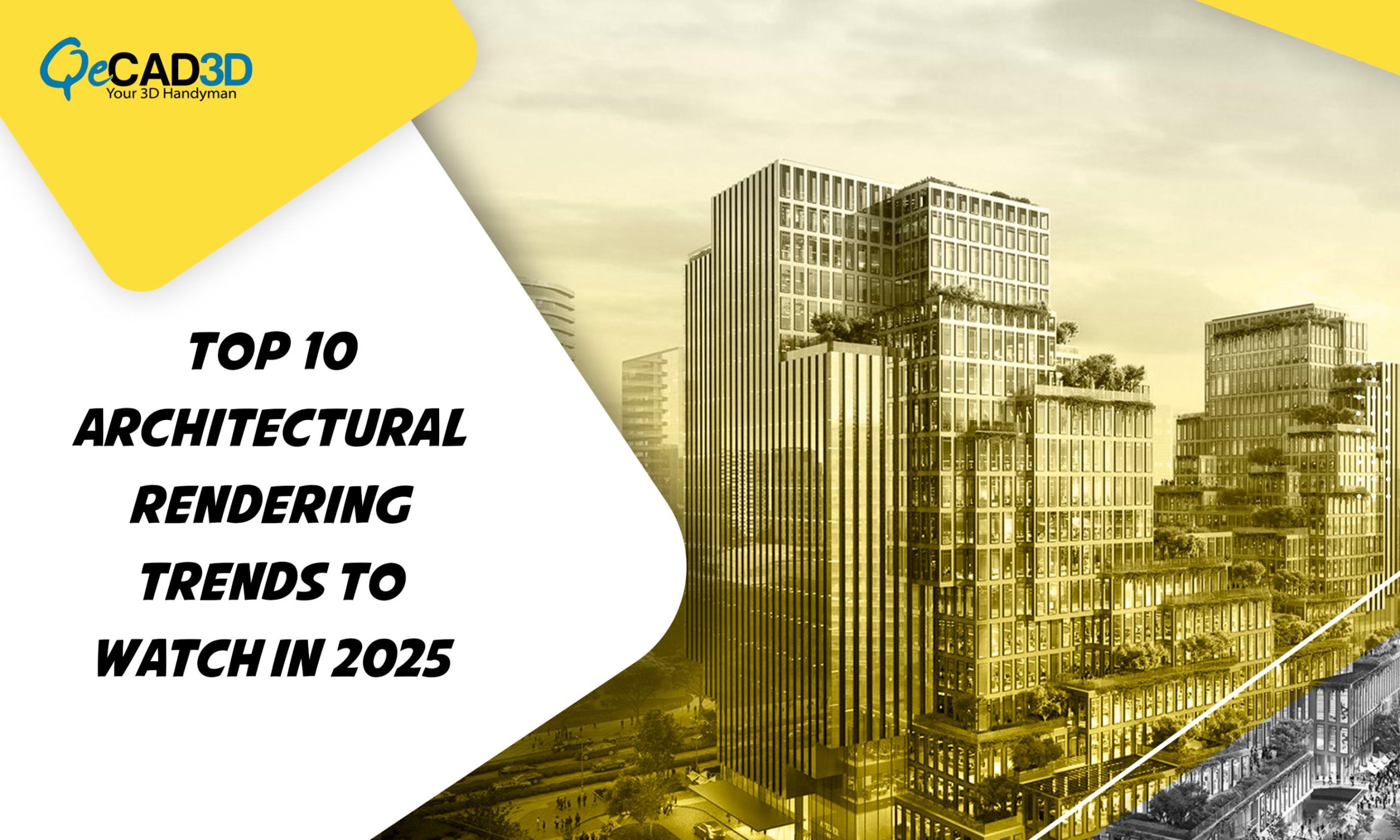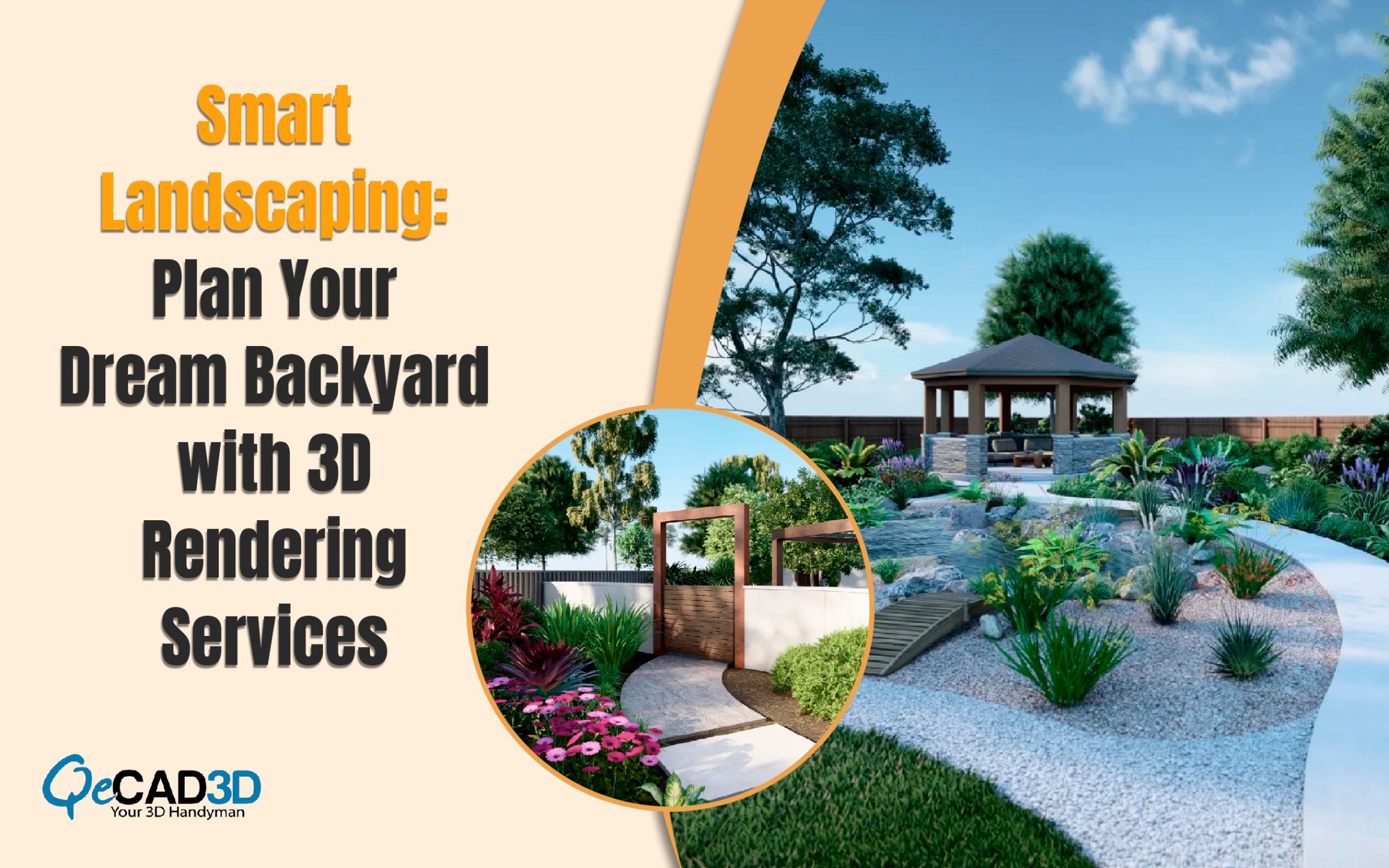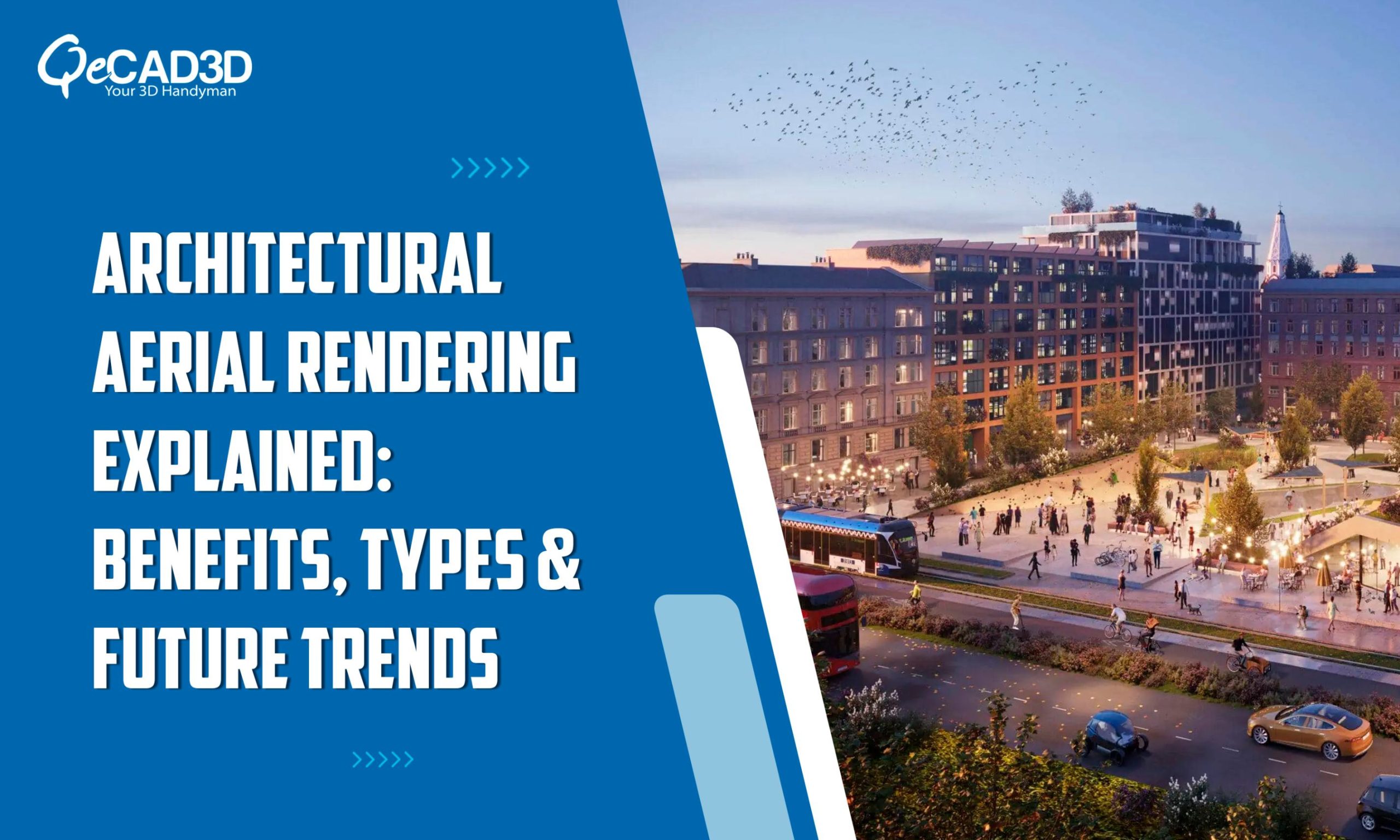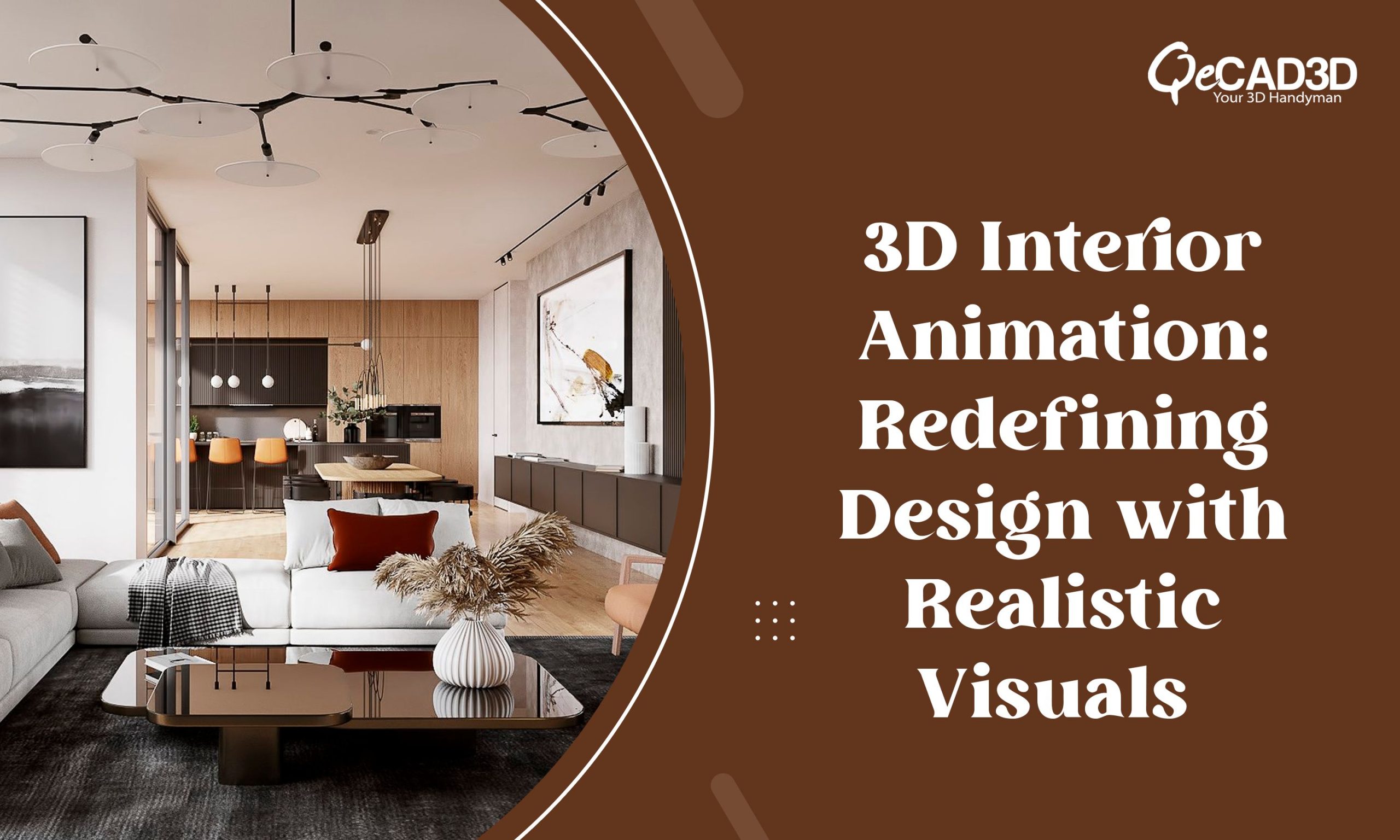Top 10 Architectural Rendering Trends to Watch in 2025
The architectural visualization industry continues to evolve rapidly, blending cutting-edge technology with artistic expression to bring designs to life. As we step into 2025, some of the emerging trends in the architectural renderings are redefining how the architects, designers as well as the clients experience and interact with virtual spaces. From real-time renderings to AI-driven automation, let’s explore the most influential trends shaping the future of architectural visualization.
1) AI-Powered Rendering Automation
Artificial Intelligence is transforming the architectural renderings by automating the repetitive tasks and enhancing the workflow efficiency. The AI-driven tools can now optimize the lightings, generate the textures and even predict the user preferences thereby reducing the rendering time while also maintaining the high-quality visuals.
Also, the Machine learning algorithms will be of great help in refining the architectural presentations ultimately making them more photorealistic than ever before.
2) Real-Time Rendering & Interactive Experiences
The real-time rendering has become more accessible with advancements in the GPU technology along with the rendering software. Platforms like Unreal Engine and Twin motion allows the architects to create an interactive 3D environment where the clients can navigate and experience the spaces dynamically. This trend will be particularly beneficial for the virtual walkthroughs as this enables the real-time modifications as well as quick feedbacks.
As it promotes two-way communication, embracing this in 2025 will not just be a trend to try but a necessity for the rendering firms.
3) Cloud-Based Rendering Solutions
Cloud computing is streamlining the rendering process by providing the scalable resources that reduces the hardware dependency. The Cloud-based rendering platforms such as Enscape and Lumion allows the teams to collaborate seamlessly and generate high-resolution renderings without the need for high-end local workstations. This shift will make the high-quality visualizations more cost-effective and accessible in 2025.
4) Photorealistic Rendering with Ray Tracing
Ray tracing technology is redefining the realism in architectural visualization, setting new standards for lifelike detail and lighting accuracy. By accurately simulating how the light will interact with surfaces, the ray tracing will enhance the reflections, shadows as well as the global illumination thereby creating the ultra-realistic visuals.
Software like NVIDIA RTX, V-Ray and Chaos Vantage will lead this transformation offering an unparalleled depth and clarity in the architectural renders in the coming years.
5) Metaverse & Virtual Reality (VR) Integration
The rise of the metaverse is influencing the architectural renderings by allowing for immersive experiences beyond the traditional 3D visualizations. The VR integration enables the architects to present the projects into the fully immersive environments thereby providing the clients with a true-to-scale vizualizations of their future spaces.
With headsets like Oculus Quest and HTC Vive, users can explore the architectural designs interactively, making informed decisions in the real time.
Metaverse will not only be amping up the gaming industry but will also amp up the future of architectural renderings in 2025.
6) Augmented Reality (AR) for On-Site Visualization
AR technology is blurring the lines between the virtual and the real world spaces. The architects and the construction professionals can overlay the 3D models onto the real-world environments using AR apps on the smartphones or tablets. This technology helps in better spatial planning, error detection along with the on-site project coordination thereby reducing the likelihood of design inconsistencies.
Viewing the use-cases of AR in architectural visualization, it will be on the top of the mind of many renderers in 2025.
7) Sustainable and Energy-Efficient Rendering
Sustainability is central to modern architecture and rendering technology is evolving to align with this vision. Eco-friendly visualization tools now focus on energy-efficient rendering algorithms ultimately reducing the carbon footprints associated with the high-power computing.
Green rendering solutions emphasize daylight simulations, energy analysis along with the environmentally responsible material choices, aligning well with global sustainability goals.
Like in every other aspect, sustainability will also be the key focus area while performing the renderings in 2025.
8) Generative Design & Parametric Modeling
Generative design and parametric modeling are already becoming more and more integrated into the architectural rendering workflows. These AI-driven techniques allows the designers to create complex structures and organic forms that adapt to the environmental conditions.
By using tools like Grasshopper for Rhino and Autodesk Dynamo, the architects can explore multiple design variations efficiently, optimizing both the aesthetics as well as the functionality.
These techniques are also here to stay and will redefine the rendering workflows in 2025.
9) Hyper realistic Textures & Material Libraries
The demand for hyper realistic materials is driving advancements in PBR (Physically Based Rendering) textures and material libraries. With improved texture mapping techniques and AI-assisted material creation, the architects can achieve unprecedented realism in their renders. Companies like Quixel and Substance by Adobe are providing extensive material libraries that enhance the visual fidelity.
Viewing the pros of these libraries, they will not only be on the top of the renderings list in 2025 but will continue to be in the rendering market for the coming years.
10) 3D Printing Integration for Tangible Prototyping
Architectural rendering is no longer confined to just the digital screens. The integration of 3D printing with rendering software enables architects to transform digital designs into tangible models. This trend enables the clients to visualize the projects more tangibly by offering a new dimension to the architectural presentations and design iterations.
This is already being used by most of the renderers due to its functionality and will continue to be on the list in 2025 to save huge in terms of costs in the real estate market.
Conclusion
The future of architectural rendering is being shaped by the technological advancements that enhance realism, interactivity and efficiency. AI, real-time rendering, cloud solutions, and immersive technologies are transforming how architectural designs are visualized and communicated. As these trends continue to evolve, the architectural rendering in 2025 will not only become more sophisticated but also more accessible thereby ensuring a seamless experience for designers and clients alike.
For architectural firms and visualization studios, staying ahead of these trends is crucial in delivering high-quality, engaging and efficient renderings that will meet the ever-evolving demands of the industry. Leveraging these advancements will be the key to creating stunning, immersive architectural experiences in the years to come.
Rendering Services providers are increasingly incorporating these advancements to enhance their workflow and deliver superior visualizations.
We at QeCAD3D offers all type of 3D services like walkthroughs, virtual tours, interior and exterior rendering services, etc. that helps the clients to visualize the architectural projects with unparalleled realism.






